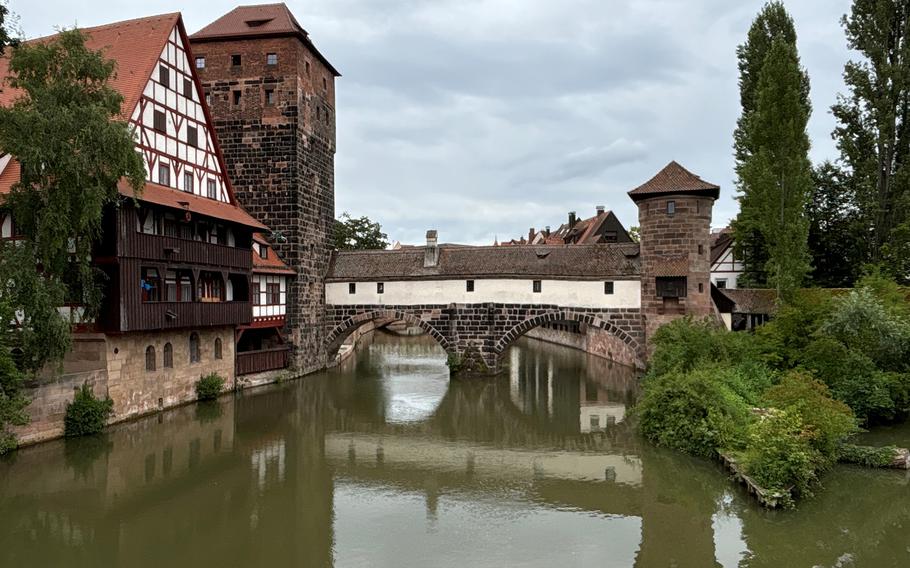
The Henkerhaus Museum, located along the Pegnitz River in Nuremberg, Germany, was once home to the city's municipal executioners and offers a glimpse into medieval crime and punishment. (Matthew M. Burke/Stars and Stripes)
Meister Franz Schmidt beheaded, hanged, burned or drowned 361 people deemed criminals while he held the role of municipal executioner in Nuremberg between 1577 and 1617.
Schmidt used torture to extract confessions and maimed lesser offenders with corporal punishment an additional 345 times. His position was thought to be fairly prestigious, though still viewed with derision.
Schmidt documented his gory tenure in the book “A Hangman’s Diary,” which provided insight into crime and punishment in the Middle Ages and beyond.
Present-day Nuremberg also has a more immersive legacy of Schmidt and his fellow executioners: a residence built for them on the Pegnitz River in 1320.
The Henkerhaus, or hangman’s house, offers visitors glimpses into one of medieval and Renaissance Europe’s darkest professions. It was home to the municipal executioner until 1806.
The information and imagery at the house, including some lifted from official documents and Schmidt’s journal, are spellbinding. There are no axes or tools on display, which made the visit seem more academic than shocking.
The office of executioner developed as the ruling class consolidated power, according to literature at the Henkerhaus. Ancient Roman law influenced the decision to separate sentencing from punishment.
The imperial city of Nuremberg may have had an executioner as far back as 1378, records indicate.
Cells and a torture chamber underneath City Hall were where executioners would extract confessions, a requirement for conviction at the time. Sentences of imprisonment were rare.
Punishments ranged from public humiliation to death. Corporal punishment included branding and mutilation.
“The resulting physical handicap meant a lifelong loss of honor and esteem,” the exhibit said.
Murder, rape, robbery, theft and even blasphemy were often punishable by death. Decapitation was considered the most humane capital punishment, while death on the breaking wheel and being burned alive were far worse.
Hanging was the second-most-used form of public execution. Women were usually drowned, until that practice was abandoned in favor of beheading.
The standout of the experience for me, besides the callous indifference to the loss of life, was seeing the bay window where the executioner’s toilet had been, above the swiftly flowing Pegnitz.
In Schmidt’s time, the bottom half was left open, allowing excrement to fall into the river. Apparently, merchants weren’t the only ones doing business on the Pegnitz.
It’s unknown where he cooked and slept, so those mundane aspects of his life are left to the visitor’s imagination.
After being damaged during World War II, the Henkerhaus was restored in 1954. It has been a museum since 2007.
On the QT
Address: Trödelmarkt 58, Nuremberg, Germany
Hours: Tuesday to Sunday, noon to 5 p.m.
Cost: Admission is free for children under 14, 3 euros for most adults, and 2 euros for ages 14 to 18, students and the severely disabled.
Information: Online: henkerhaus-nuernberg.de